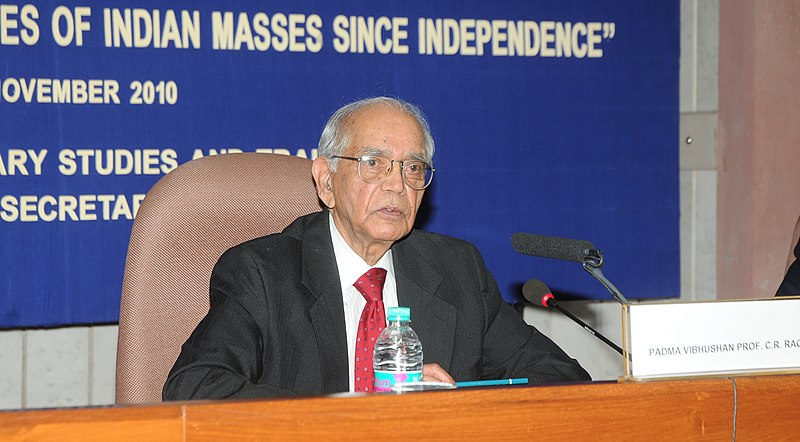News highlights:
- Recently, Indian-American mathematician Calyampudi Radhakrishna Rao was awarded International Prize in Statistics 2023.
- The 2023 International Prize in Statistics is regarded as the equivalent of the Nobel Prize in Statistics.
International Prize in Statistics 2023:
- Overview:
- The 2023 International Prize in Statistics, which is regarded as the equivalent of the Nobel Prize in Statistics, has been awarded to Calyampudi Radhakrishna Rao, an Indian-American statistician.
- The prize, established in 2016, is presented once every two years to an individual or team that has made significant contributions to science, technology, and human welfare through the use of statistics.
- The award is given out by a collaboration of five major international statistics organisations and recognises major accomplishments by an individual or team.
- Rao will be honoured with the prize, which carries an $80,000 cash award, at the International Statistical Institute World Statistics Congress in Ottawa, Canada, in July.
- International Statistical Institute:
- The International Statistical Institute (ISI) is a professional association of statisticians. It was founded in 1885, although there had been international statistical congresses since 1853.
- The institute has about 4,000 elected members from the government, academia, and the private sector.
- The affiliated Associations have membership open to any professional statistician.
- The institute publishes a variety of books and journals and holds an international conference every two years.
- The biennial convention was commonly known as the ISI Session; however, since 2011, it is now referred to as the ISI World Statistics Congress.
- The permanent office of the institute is located in the Statistics Netherlands building in Leidschenveen (The Hague), in the Netherlands.
Who is Calyampudi Radhakrishna Rao?
- About:
- Rao, a prominent Indian-American mathematician and statistician was born to a Telugu family in Hadagali, Karnataka.
- He is currently a professor emeritus at Pennsylvania State University and Research Professor at the University at Buffalo.
- Rao has received many honours, like Padma Bhushan (1968) and Padma Vibhushan (2001).
- In his remarkable 1945 paper published in the Bulletin of the Calcutta Mathematical Society, Rao demonstrated three fundamental results that paved the way for the modern field of statistics and provided statistical tools heavily used in science today.
- The first, known as the Cramer-Rao lower bound, 2nd known as the Rao-Blackwell and the third result provided insights that pioneered a new interdisciplinary field that has flourished as “information geometry.”
- Combined, these results help scientists more efficiently extract information from data.
- Applications of his theories:
- The Cramer-Rao lower bound is of great importance in such diverse fields as signal processing, spectroscopy, radar systems, multiple image radiography, risk analysis, and quantum physics.
- The Rao-Blackwell process has been applied to stereology, particle filtering, and computational econometrics.
- Information geometry has recently been used to aid the understanding and optimization of Higgs boson measurements at the Large Hadron Collider.
- It has also found applications in recent research on radars and antennas and contributed significantly to advancements in artificial intelligence, data science, signal processing, shape classification and image segregation.
Pic Courtesy: Wikimedia Commons
Content Source: The Indian Express



